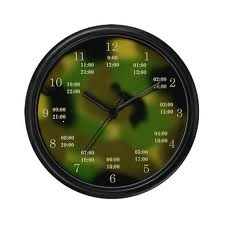 Brian Tracy is one of America’s leading authorities on the development of human potential and personal effectiveness. A dynamic and inspiring speaker, he addresses thousands of people each year on the subjects of personal and professional development, including the executives and staff of such firms as IBM, Arthur Andersen, McDonnell Douglas, and The Million Dollar Round Table. Prior to founding his own firm, Brian Tracy International, he had successful careers in sales and marketing, investments, real estate development, distribution, and management consulting. Tracy is the author of over forty books including the bestselling book Maximum Achievement.
Brian Tracy is one of America’s leading authorities on the development of human potential and personal effectiveness. A dynamic and inspiring speaker, he addresses thousands of people each year on the subjects of personal and professional development, including the executives and staff of such firms as IBM, Arthur Andersen, McDonnell Douglas, and The Million Dollar Round Table. Prior to founding his own firm, Brian Tracy International, he had successful careers in sales and marketing, investments, real estate development, distribution, and management consulting. Tracy is the author of over forty books including the bestselling book Maximum Achievement.
4) Question: Veterans overseas often have to turn off parts of themselves, specifically emotional parts. How can someone recharge or re-engage parts of themselves and their brain that they haven’t used in a long time?
Answer: Perhaps the greatest discovery in human history is that, “You become what you think about – most of the time.”
Your brain adjusts quickly to the stresses and demands of a new situation, especially in a combat situation overseas. It shuts down parts of your thoughts and emotions that might make you ineffective or distract you from the work at hand. This is normal and natural, and is a survival mechanism that is designed for your benefit.
When you return, you still become what you think about most of the time. Now, however, it is time to think of other things. Just as if you change your physical diet, you will feel differently, when you change your mental diet, you will feel differently as well.
When you return, you can begin the reprogramming of your mind in a positive way by reading positive books, listening to positive audio programs, associating with positive people, and even watching comedies and action programs on television that stimulate your mind and begin changing your thinking in a positive way.
Fully 95% of what you do, say, think or feel is the result of habit. Good habits are hard to form but easy to live with. Bad habits are easy to form but hard to live with. The good news is that you can develop new, positive, healthy habits of thought and feeling by repeating the words, pictures and actions consistent with your new habit over and over again until they lock in.
Remember, the one thing in the world that you can control is your own thinking. And if you keep your thoughts on positive things; your goals, your relationships, your health, and your future, you eventually develop a whole new set of mental connections that keep your positive most of the time. Just remember to be patient with yourself at the beginning.
5) Question: In your book Victory, you talk about how to apply the proven principles of military strategy to achieve greater success in your personal and business life. How can veterans turn their experiences with military strategy and battle plans into personal and business plans?
Answer: My book, Victory, is a good piece of writing, filled with practical ideas that veterans can relate to immediately. Each returning veteran should read this book from cover to cover. To that end, anyone who comes to my website at www.briantracy.com/victory as a result of reading this article can download this eBook at no charge, as a gift from me to you, and in appreciation of your service.
When you get the book, read one chapter per day and take notes. Think about how you can apply these ideas to your current life.
6) Question: After some of the stories about leadership in the military, what advice would you give someone in a leadership position?
Answer: Many veterans have had many experiences in leadership already. They now need to learn to use those experiences and knowledge in leadership positions in the private sector.
I would suggest that each person reading this acquire my book, “How the Best Leaders Lead.” and read it from cover to cover. It will show you exactly how you can translate what you have learned in the military into getting valuable results for which companies will pay in the private sector.
Check Out the Entire Interview
Part one: Click Here
Part two: Click Here
Part three: Click Here

 It’s Spring Break this week at my school and since I’m too broke and don’t have enough time to do anything to celebrate spring break, I’ve decided to go raw vegan for the week. I’ve tried going vegan before, but never as a raw vegan.
It’s Spring Break this week at my school and since I’m too broke and don’t have enough time to do anything to celebrate spring break, I’ve decided to go raw vegan for the week. I’ve tried going vegan before, but never as a raw vegan. Since I’ve redesigned the site, I wanted to post up some of the important blog posts from the old site.
Since I’ve redesigned the site, I wanted to post up some of the important blog posts from the old site.

 So the Army’s been using Yoga to help Vets with PTSD; but a lot of people aren’t familiar with the practice, so I figured I’d spread the info for those who are interested.
So the Army’s been using Yoga to help Vets with PTSD; but a lot of people aren’t familiar with the practice, so I figured I’d spread the info for those who are interested.